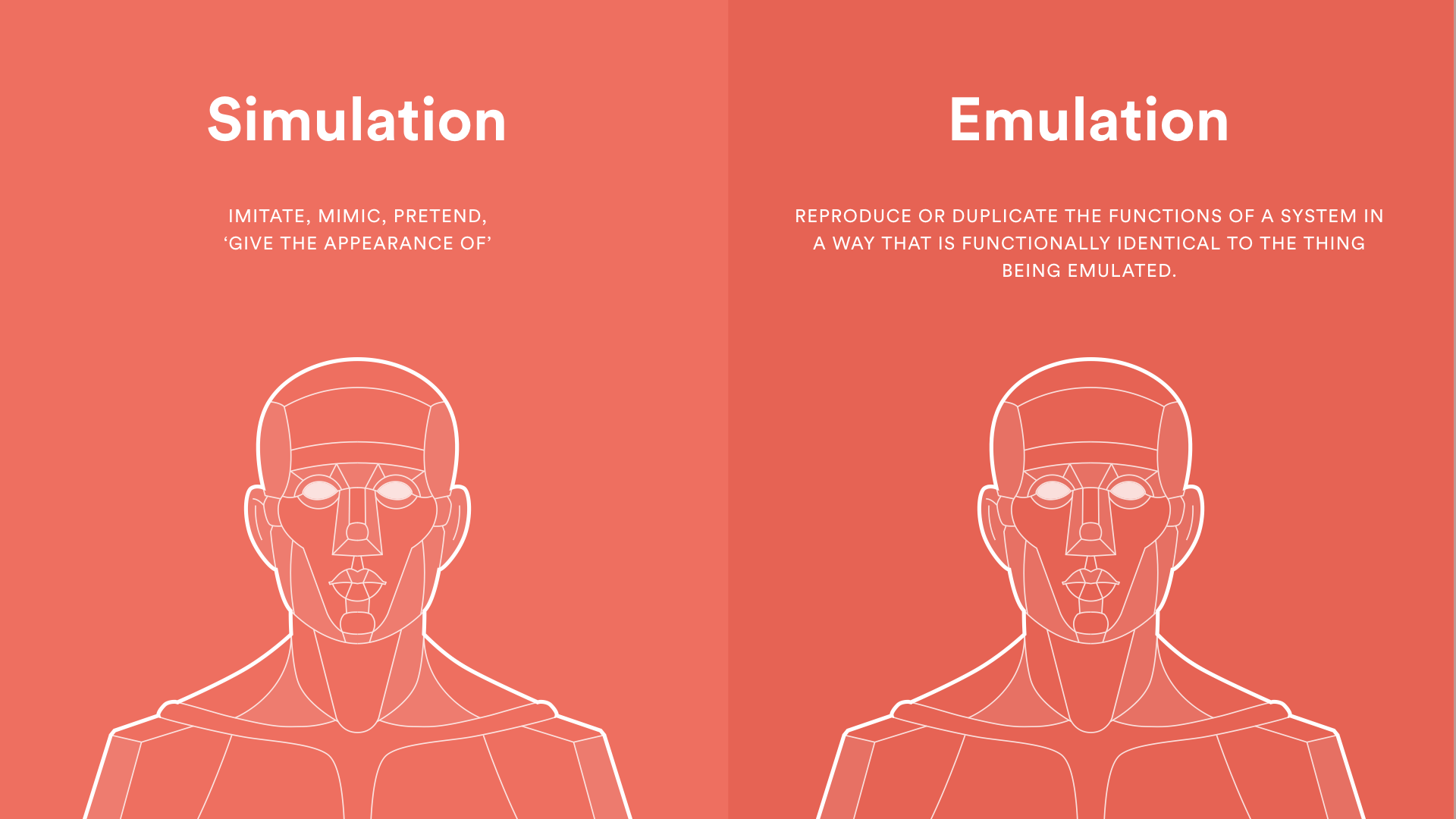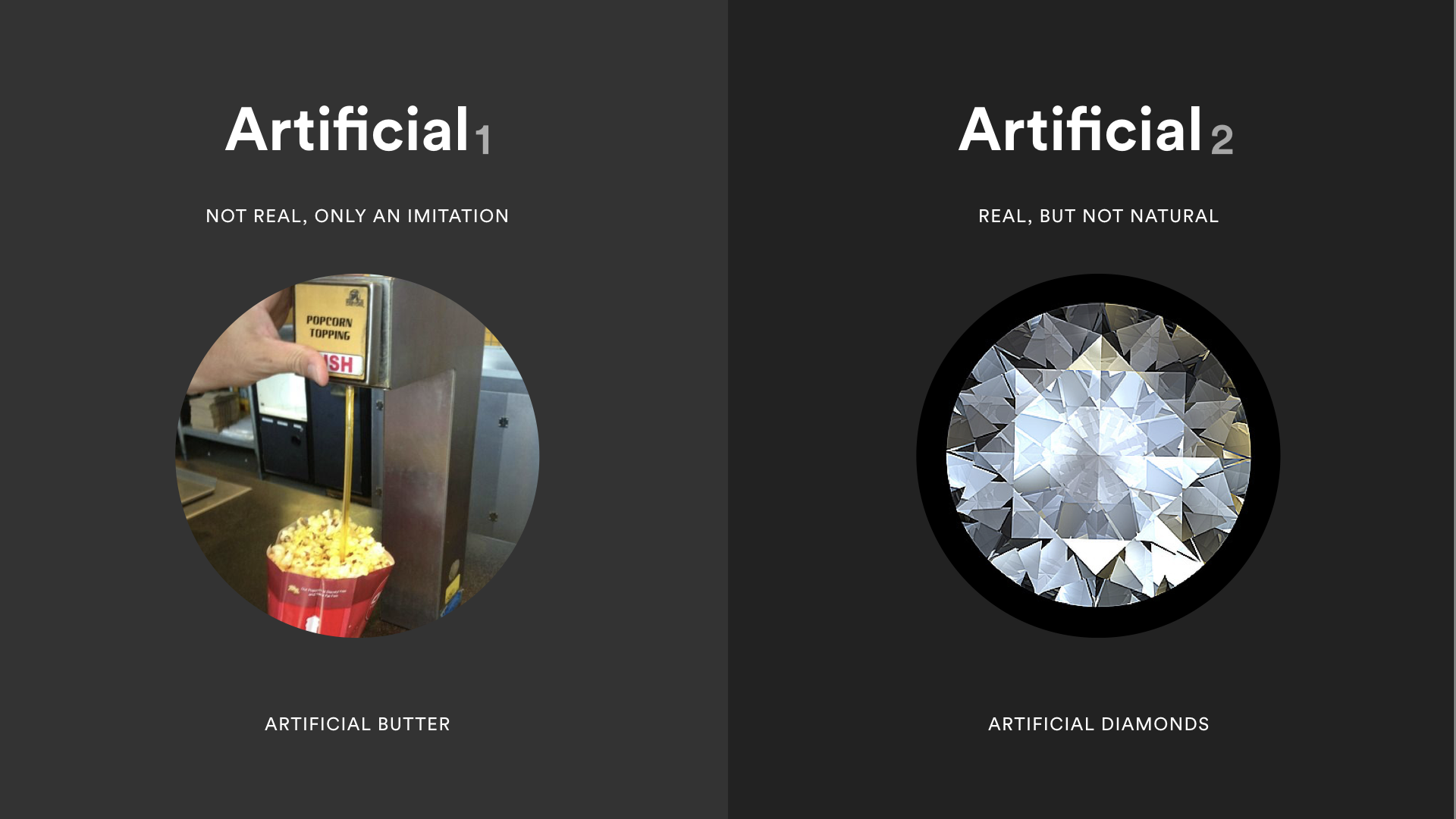What if we could make a machine that behaved like humans, or even had thoughts and feelings like humans? When we talk about Artificial Intelligence, we often think in these terms. We think about some man-made machine—existing or hypothetical—and we compare some aspect of that machine to some aspect of human beings. This comparison can lead to engaging stories, but it can also lead to confusion about what our technology means and what its implications are for society. This post addresses the first of 5 distinctions that I believe are necessary to discuss AI clearly and responsibly, at least from a philosophical point of view. The 5 distinctions are:
Simulation vs. Emulation
Syntax vs. Semantics
Observer-relative vs. Observer-independent features of reality.
In one sense, AI is thought to simulate some aspect of human appearance or behavior. ‘Simulate’ as it is used here is synonymous with imitate, mimic, pretend, or ‘give the appearance of’. In another sense people think of AI as doing more than just mimicking human behavior. They think of AI as actually emulating some aspect of human mental life. In this context, emulate means to reproduce or duplicate the functions of system in a way that is practically identical to the thing being emulated.
The difference between simulation and emulation can be clarified by another distinction between the 2 ways in which we use the word “Artificial”. In one sense, the word “artificial” refers to something that is not real, only an imitation. For example, artificial butter is not real butter but only an imitation of the real thing. In this sense ‘artificial’ is contrasted with ‘real’. ‘Artificial’ can also refer to something that is real but produced by artificial means. For example, artificial diamonds, also called synthetic or lab-grown diamonds, are real diamonds. They are identical in terms of being made of the same material (pure carbon) and having the same structure (crystallized in isotropic 3D form). They just aren’t produced via natural geological processes. In this sense ‘artificial’ is contrasted to ‘natural’. So artificial can either mean “not real” or “not natural”.
AI that simulates intelligence is “not-real intelligence”. Used in this way, the word “intelligence” is only figurative or metaphorical. AI that emulates intelligence is “not-natural intelligence” but it is still real. This is a literal usage of word “intelligence”.
| Simulation AI | Artificial in the sense that it is not real, only an imitation. |
|---|---|
| Emulation AI | Artificial in the sense of being real, but not produced by natural means |
Imagine that we created a machine that is literally intelligent in sense of being practically identical to a human in terms of intelligence. This would be an Emulation AI as described above. Such a machine would also include whatever is necessary for literal human-like intelligence to exist such as conscious awareness, desires, intentions, rationality and perhaps even emotions. By contrast, those intrinsic features would be missing in a Simulation AI even though we may talk as if it had awareness or rationality. This distinction shows that the Turing test is no help in identifying whether or not a machine is truly intelligent. For the test provides no criteria for identifying whether a machine that could pass the Turing test is an emulation of true intelligence or merely a simulation.






